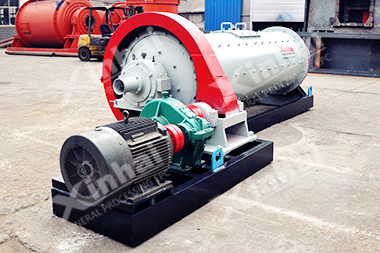- Home
- About
-
Mineral Processing EPC+M+O

Providing optimized solutions for your mine, one-stop service for mineral processing plant!
View details -
Product
- Grinding
- Classifying
Grinding & Classifying
- Flotation
- Gravity Separation Equipment
- Magnetic Equipment
- Gold Extraction Equipment
- Washing Equipment
Separating Process
- Thickening
- Dewatering Machine
Thickening & Dewatering
- Accessories
- Auxiliary Product
Consumables

Xinhai mineral processing equipment mainly include: grinding equipment, flotation equipment, dewatering equipment, magnetic separation equipment, and so on. Some of the equipment is Xinhai independent research and development, and has been awarded national patent. View details
-
Solutions
- Gold Tailings
- Tailings
Tailings

Gold CIP Production Line adsorbs gold from cyaniding pulp by active carbon including 7 steps: leaching pulp preparation, cyaniding leaching, carbon adsorption, gold loaded carbon desorption, pregnant solution electrodeposit, carbon acid regeneration, leaching pulp. View details
- Case
-
News
- Contact
Home Pruduct News Seven Tips Increasing Ball Mill Grinding Efficiency
Seven Tips Increasing Ball Mill Grinding Efficiency
2020-10-26 XinHai Views (2545)
Through the long period operation, ball mill meets the problem of grinding efficiency descending. It impacts the normal operation of processing plant, and also causes economic losses. In actual production, how can we effectively increase ball mill grinding efficiency? Seven tips will help you.
1.Increasing the grindability of raw ore
Commonly, the grindability is determined by the hardness, degree of dissociation, size and structure of raw ore. The small grindability means that the raw ore is easy to grind, which has relatively small wear on the liner and grinding media of the ball mill and low energy consumption. The large grindability means the raw ore is hard to grind, which has larger wear on the liner and the grinding media of ball mill and larger energy consumption. Therefore, the grindability directly influences the grinding efficiency of ball mill.
In production, when the raw ore is hard to grind and the required particle size is thin, we can take measures to increase raw ore grindability under economic and site permission. Such as adding chemical reagent during grinding or heating the minerals to reducing the hardness.
2.More crushing and less grinding, reducing the feeding particle size of ball mill
The larger feeding particle size is, the greater the work done by the ball mill on the ore, which impacts the grinding efficiency. To reach the eligible grinding fineness, the workload must increase. The energy consumption is also increasing.
If the feeding particle size reduces, the crushing product particle size is small. It is more crushing and less grinding. Therefore, the feeding particle size is suitable, so the grinding efficiency also increases.

3.Keeping the suitable steel ball filling ratio
Under certain rotating speed, the larger steel ball filling ratio is, the more hits of materials and the larger grinding area is. So, the energy consumption is also large. It easily leads to the change of steel ball motion state, which reversely reduces the hit effect of large particle material. In production, the filling ratio of many mines is 45%~50%. However, it is only an approximate range, because the actual conditions of different processing plants are different. Copying blindly will not achieve the ideal grinding efficiency, it depends on the situation.
4.Reasonably add steel balls
During the long period of operation, the ore grinding will lead to the wear of steel ball. It leads to the ratio change of different size steel balls. It changes the grinding product fineness and even influences the grinding efficiency of ball mill. Therefore, the operators of ball mill need to check the steel ball situation regularly, adding steel ball reasonably and ensuring the stable production of ball mill.
5.Strictly controlling the grinding concentration of ball mill
Generally, the grinding concentration influences the pulp proportion, fluidity and degree of adhesion of steel ball. The grinding concentration, the slurry flowing fast, the material is not easy to stick to steel balls, and also reduces the impact and grinding to material, leading to unqualified discharge particle size and low grinding efficiency. The grinding concentration is high, so the material is easy surrounding to the steel balls, increasing the impact and grinding to material. However, the pulp flows slow, easy to over grinding.
In production, controlling grinding concentration is through controlling the feeding amount, water supply, or adjusting the particle size composition of graded returned sand of control classification, helping increasing ball mill grinding efficiency.

6.Optimizing ball mill grinding flow
According to the ore characteristic of raw ore (valuable mineral inlaid granularity, monomer dissociation, gangue mineral inlaid granularity), the grinding flow is optimized, such as pre-throwing, pre-enrichment, stage grinding, pre-classification. On the one hand, it reduces the feeding amount. On the other hand, valuable minerals can be recovered in time. It increases the ball mill grinding efficiency.
7.Improving classification efficiency
The classification efficiency has an implied influence on grinding efficiency. The high classification efficiency means that the qualified particles can be high-efficiency discharged in time. The low classification means most of the qualified particles are not discharged and returned to ball mill regrinding, which easily causes over grinding. In production, two-stage classification or improving classification equipment can increase the classification efficiency and relatively improving the grinding efficiency.
In the grinding process, there are multiple indexes influencing grinding efficiency. Many indexes are hard to quantitative analyze, which can only be qualitatively analyzed. This requires ball mill technicians to analyze according to the actual production situation on site and the results of qualitative analysis. Finally, reasonable technical parameters are obtained to guide on-site production and strive for the ideal ball mill grinding efficiency.
Four Common Problems of Circular Vibrating Screen And Their Measures
As a common type of vibrating screen, what are common problems of the circular vibrating screen (also known as round vibrating screen) in the daily operation? And how can we solve them? ... [more]
Four Common Faults of Rod Mill and Their Solutions!
The production practice has proved that reducing the failure of the pinion and bearing of the rod mill plays an important role in ensuring the continuous operation of the system and reducing the cost pressure. Here are the main causes of pinion failure and bearing failure, and their corresponding solutions. ... [more]
Related Article
- A Big Inventory of Quartz Sand Processing Equipment,Collect It!
- Xinhai Mining EPC Held The 2020 Safety Summary Meeting
- The Ball Mill Gears Wear Intensifies? Here Are the Reasons and Solutions!
- 【Xinhai Case】Laos 2000TPD Gold Processing Project
- Chairman of Xinhai Mining, Mr. Zhang Yunlong was Invited to Participate in The 8th China International Mining Development Summit 2020
- Xinhai Mining Took Two Awards in This Skill Competition!
- Xinhai Mining EPC participated in the Silk Road Mining Forum and Mining Technology Conference
- Three Operating Guidelines to Teach You How to Properly Operate Grinding Equipment
- Seven Highlights of Xinhai Thickener!
- Guide of Gold Processing Equipment
Mineral Processing EPC
Solutions
CONTACT US
- Tel: 0086 15901320633
- Fax: 0086 10 59621207
- Email: mhxu@xinhaimining.net
© 2017 Shandong Xinhai Mining Technology & Equipment Inc. Technical Support: Beijing Xinhulian Technology Co., Ltd.
Factory Address: No. 188, Xinhai Street, Fushan high-tech industrial development district, Yantai, Shandong, China






